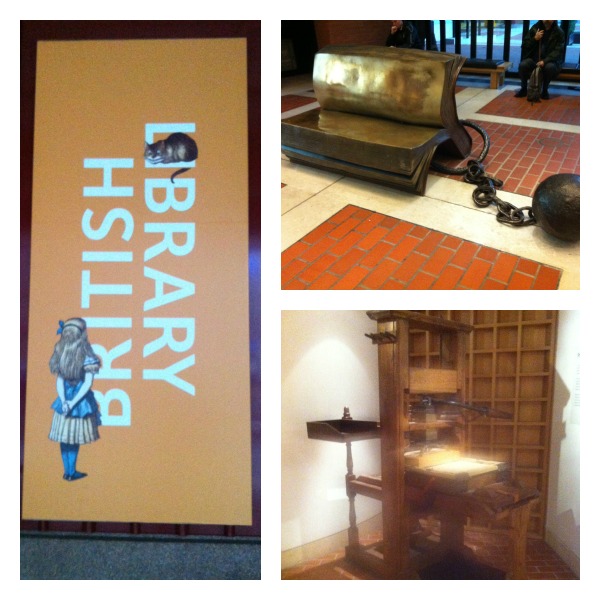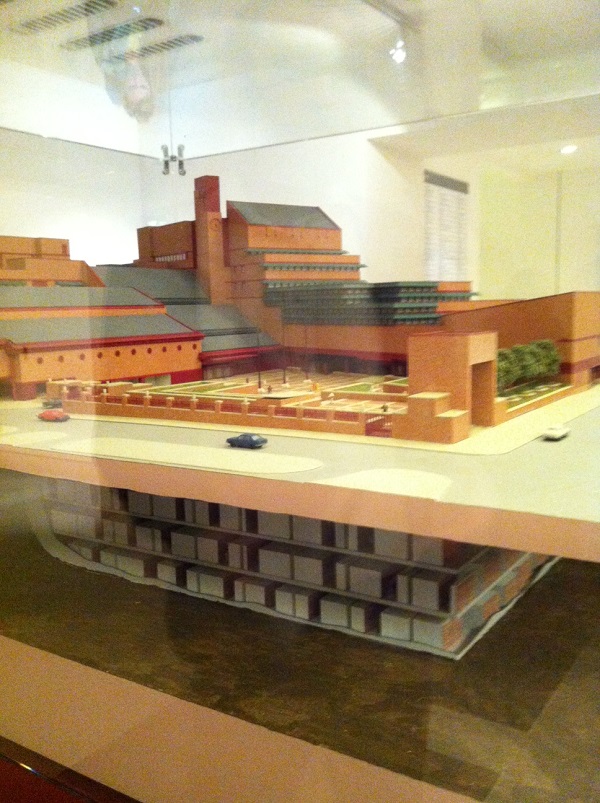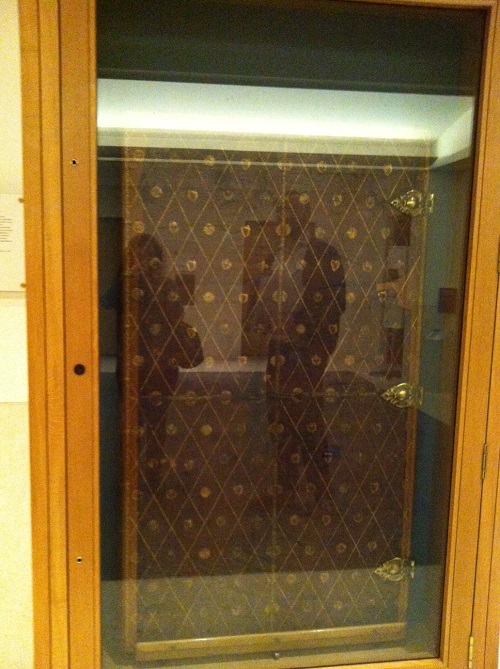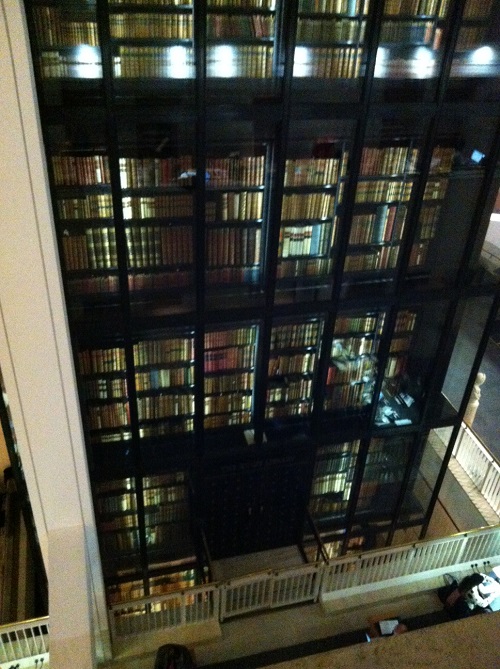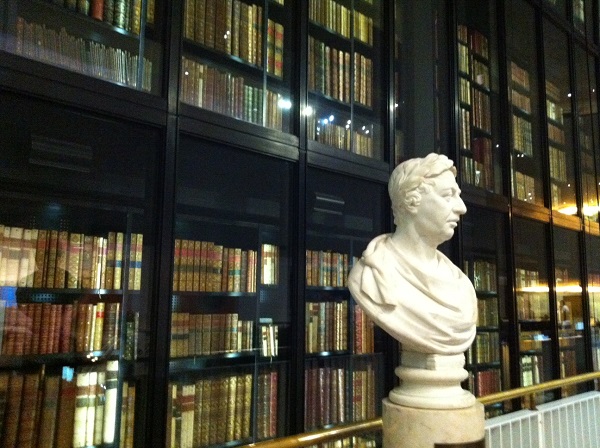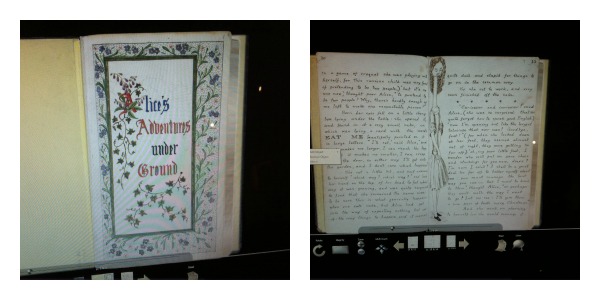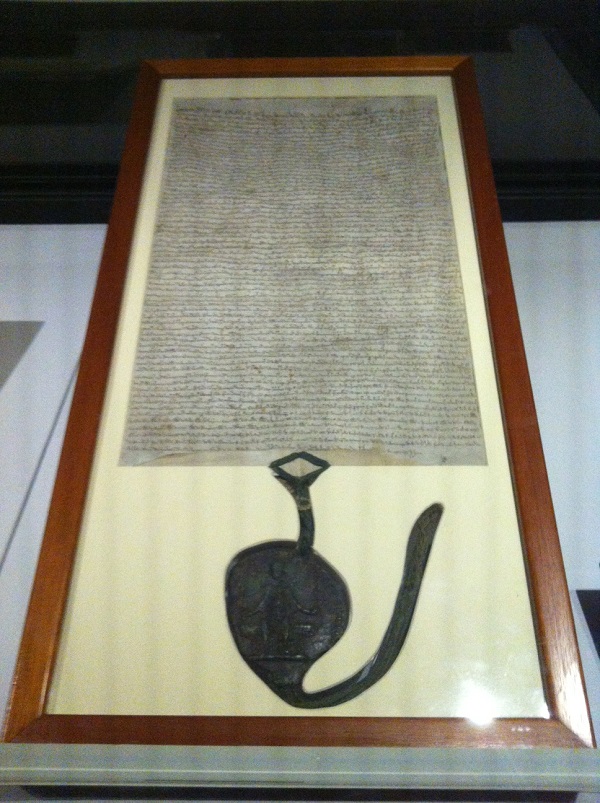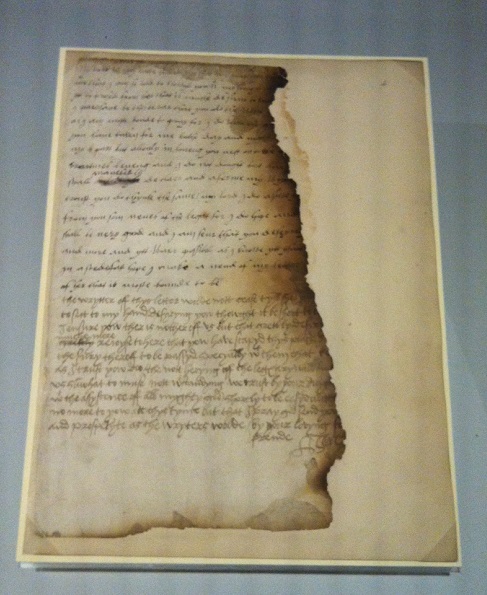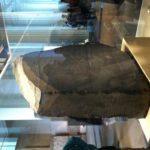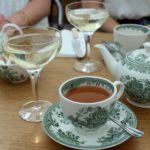Guys, it’s happening. I promised myself I wouldn’t let it, but it is. I’m getting lazy in my tourism.
Before I moved here, I was sure that I wouldn’t get complacent. I was sure I’d keep wanting to tour the city. I wouldn’t be like city dwellers all over the world who live in a place surrounded by amazing sights but then rarely visit them. I was sometimes that person in DC, but I was certain I’d be better here. But then yesterday morning I was off of work. I was sitting my pajamas, watching TV, and working on the computer and all of a sudden it was 11:30. I had promised myself I would go out, but it was 11:30 and I hadn’t showered yet, I hadn’t really eaten anything but handfuls of granola, it was rainy, and I was lazy. But I promised myself I’d be better. So, I looked at my visit wish-list and decided to get off the couch and check out the British Library.
It’s a really interesting and nice place, but I’ll be honest it isn’t a very sexy tour. Basically the tour is learning about the history of the library and how people get access to books. I was the only one on the tour, which at first made me feel awkward but it turned out just fine. I don’t know the name of my tour guide. I’m choosing to believe the book Watching the English, which says English people don’t like to introduce themselves at the beginning of conversations with new people. Regardless, he was a great tour guide because he was friendly, and knowledgeable, and so passionate. Learning about how the books travel the building or the inner workings of their storage facility might not sound fascinating, but for me, listening to someone who clearly loves what they do makes the material so much more engaging. He’s also been with the library since before 1997, so he’s seen it when it was housed in the British Museum and when it started in its current location.
Anyway, the tour started properly with this model of the library. It gives you a sense of its really large size and a little bit about the storage. Most of the storage is in an automated facility in Yorkshire, but beneath the main library building are four levels of book storage. He told me about the history of the library and its connection to the British Museum and how eventually it outgrew its original home. The library building dates to 1973. It’s large and allows for a good bit of natural light, but in my opinion it looks like many university or large public libraries.
Books here can’t be checked out, they can just be used for the day in the library. He took me to the staff area to see where the books are collected and how they are sent throughout the museum. Basically, it looks like the conveyor belts at the airport. Books go into a bin and then roll down a belt all across the library. I even saw a DVD of how it all works. It was nice being on the tour myself. I asked lots of questions about using the library, conservation, types of books, digital copies – ever random thing I wanted to know. When I asked about acquiring digital copies over hard copies, my guide said they will continue to get hard copies “in case civilization collapses.” I just love that optimism – if there is a zombie apocalypse and there is no technology, at least we will have all kinds of books.
After that he started to show me some objects. This photo below is of an atlas. I know it looks like a door, but it’s an atlas. It’s called the Klencke Atlas. You can see our reflections a bit in the glass, so you can tell it’s really tall. He said it weighs 30 stone, which equals over 400 pounds! It was owned by King George III and was used at some point as a table. In person you can make out a cup ring in the leather – moral of the story is that coasters are important!
The literal, and to some extent figurative, center of the library is the King’s Library which was donated by George III. It’s a gorgeous tower in the center of the library displaying so many gorgeous leather books. My guide said George III spent his life collecting and then he added “and doing other things of course.” I chuckled because, you know, he collected books and dealt with “other things” like America’s Independence. No biggie. Anyway the books are gorgeous and were donated with the stipulation that they would always be on display and available to the public. It’s lovely to look at.
However, the best things to see are in the Treasures gallery. They have digitized a number of important historic works like Leonard Da Vinci’s notebooks and Lewis Caroll’s Alice’s Adventures Under Ground. They are amazing! You can see the words in the author’s own hand (and Da Vinci’s right to left writing!), you can scroll through each page, you can zoom in, AND you can see all their virtual books online at home.
I took pictures of all kinds of books and realize that those pictures might not be that interesting, but I’m going to go on gushing. I saw a letter to Winston Churchill about forming the Monument’s Men. I saw Gutenberg’s Bible, which was the first real book to be printed using the printing technique Gutenberg invented in the 1450s. And I saw the Magna Carta (below).
I also saw some gorgeously illustrated religious and scientific texts. Look at these beautiful classification of plants!
I’m going to end with the object that really stunned me, even though it’s not visually very astounding. If you’ve read my post gushing about Hampton Court Palace you might know I’m very interested in Tudor History. I watch the dramas and documentaries, I read everything, I have a Henry VIII stuffed bear, and I currently have an Anne Boleyn biography in my purse. So, when I saw this letter I was struck. It’s a letter written by Anne Boleyn and King Henry VIII to Cardinal Wolsey. This is the kind of document that informs all the things I’ve read and seen about these people! Anne Boleyn and Henry VIII were present there in that letter, and for a second it felt like the gap in history was smaller, that I could be closer to those people and those moments. At its very best, that is what museums, artifacts, and libraries should do – connect people with information and history. And I felt lucky to have that nice experience at the British Library.

